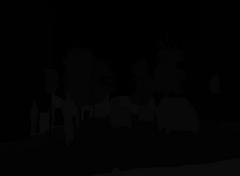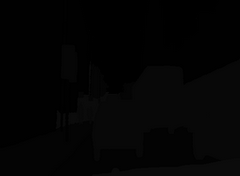前提・実現したいこと
こちらのサイトに掲載されている SegNet プログラムについての質問です。
前回もSegNetに関する質問を投稿したのですが、そのときは画像データの学習(train.pyの実行)の際にエラーメッセージが出てしまう件についての解決策要求でした。
その件については、「GPUやメモリの性能不足である可能性があり、画像データのサイズを小さくしてはどうか」との助言をいただき、早速データセットフォルダ内の画像ファイルのサイズをすべて小さくし、それに合わせてプログラムコード中の該当する箇所をそのサイズ値に書き換えて実行しました。
その結果、train.py の実行時に以下のようなエラーが出てしまいました。
発生している問題・エラーメッセージ
runfile('C:/Users/t.k/.spyder-py3/train.py', wdir='C:/Users/t.k/.spyder-py3') loading data... .Traceback (most recent call last): File "<ipython-input-3-6de18f7107f1>", line 1, in <module> runfile('C:/Users/t.k/.spyder-py3/train.py', wdir='C:/Users/t.k/.spyder-py3') File "C:\Users\t.k\Anaconda3\lib\site-packages\spyder_kernels\customize\spydercustomize.py", line 704, in runfile execfile(filename, namespace) File "C:\Users\t.k\Anaconda3\lib\site-packages\spyder_kernels\customize\spydercustomize.py", line 108, in execfile exec(compile(f.read(), filename, 'exec'), namespace) File "C:/Users/t.k/.spyder-py3/train.py", line 59, in <module> main() File "C:/Users/t.k/.spyder-py3/train.py", line 36, in main train_X, train_y = ds.load_data('train') # need to implement, y shape is (None, 360, 480, classes) File "C:\Users\t.k.spyder-py3\dataset.py", line 60, in load_data label.append(self.one_hot_it(cv2.imread(os.getcwd() + txt[i][1][7:][:-1])[:,:,0])) File "C:\Users\t.k.spyder-py3\dataset.py", line 43, in one_hot_it x[i,j,labels[i][j]] = 1 IndexError: index 12 is out of bounds for axis 2 with size 12
該当のソースコード
dataset
1import cv2 2import numpy as np 3 4from keras.applications import imagenet_utils 5 6import os 7 8DataPath = './CamVid/' 9data_shape = 176*240 10 11class Dataset: 12 def __init__(self, classes=12, train_file='train.txt', test_file='test.txt'): 13 self.train_file = train_file 14 self.test_file = test_file 15 self.data_shape = 176*240 16 self.classes = classes 17 18 def normalized(self, rgb): 19 #return rgb/255.0 20 norm=np.zeros((rgb.shape[0], rgb.shape[1], 3),np.float32) 21 22 b=rgb[:,:,0] 23 g=rgb[:,:,1] 24 r=rgb[:,:,2] 25 26 norm[:,:,0]=cv2.equalizeHist(b) 27 norm[:,:,1]=cv2.equalizeHist(g) 28 norm[:,:,2]=cv2.equalizeHist(r) 29 30 return norm 31 32 def one_hot_it(self, labels): 33 x = np.zeros([176,240,12]) 34 for i in range(176): 35 for j in range(240): 36 x[i,j,labels[i][j]] = 1 37 return x 38 39 def load_data(self, mode='train'): 40 data = [] 41 label = [] 42 if (mode == 'train'): 43 filename = self.train_file 44 else: 45 filename = self.test_file 46 47 with open(DataPath + filename) as f: 48 txt = f.readlines() 49 txt = [line.split(' ') for line in txt] 50 51 for i in range(len(txt)): 52 data.append(self.normalized(cv2.imread(os.getcwd() + txt[i][0][7:]))) 53 label.append(self.one_hot_it(cv2.imread(os.getcwd() + txt[i][1][7:][:-1])[:,:,0])) 54 print('.',end='') 55 #print("train data file", os.getcwd() + txt[i][0][7:]) 56 #print("label data raw", cv2.imread(os.getcwd() + '/CamVid/trainannot/0001TP_006690.png')) 57 return np.array(data), np.array(label) 58 59 60 def preprocess_inputs(self, X): 61 ### @ https://github.com/fchollet/keras/blob/master/keras/applications/imagenet_utils.py 62 """Preprocesses a tensor encoding a batch of images. 63 # Arguments 64 x: input Numpy tensor, 4D. 65 data_format: data format of the image tensor. 66 mode: One of "caffe", "tf". 67 - caffe: will convert the images from RGB to BGR, 68 then will zero-center each color channel with 69 respect to the ImageNet dataset, 70 without scaling. 71 - tf: will scale pixels between -1 and 1, 72 sample-wise. 73 # Returns 74 Preprocessed tensor. 75 """ 76 return imagenet_utils.preprocess_input(X) 77 78 def reshape_labels(self, y): 79 return np.reshape(y, (len(y), self.data_shape, self.classes))
model
1from keras.layers import Input 2from keras.layers.core import Activation, Flatten, Reshape 3from keras.layers.convolutional import Convolution2D, Conv2D, MaxPooling2D, UpSampling2D 4from keras.layers.normalization import BatchNormalization 5from keras.models import Model 6from keras.utils import np_utils 7 8def SegNet(input_shape=(176, 240, 3), classes=12): 9 ### @ https://github.com/alexgkendall/SegNet-Tutorial/blob/master/Example_Models/bayesian_segnet_camvid.prototxt 10 img_input = Input(shape=input_shape) 11 x = img_input 12 # Encoder 13 x = Conv2D(64, (3, 3), padding="same")(x) 14 x = BatchNormalization()(x) 15 x = Activation("relu")(x) 16 x = MaxPooling2D(pool_size=(2, 2))(x) 17 18 x = Conv2D(128, (3, 3), padding="same")(x) 19 x = BatchNormalization()(x) 20 x = Activation("relu")(x) 21 x = MaxPooling2D(pool_size=(2, 2))(x) 22 23 x = Conv2D(256, (3, 3), padding="same")(x) 24 x = BatchNormalization()(x) 25 x = Activation("relu")(x) 26 x = MaxPooling2D(pool_size=(2, 2))(x) 27 28 x = Conv2D(512, (3, 3), padding="same")(x) 29 x = BatchNormalization()(x) 30 x = Activation("relu")(x) 31 32 # Decoder 33 x = Conv2D(512, (3, 3), padding="same")(x) 34 x = BatchNormalization()(x) 35 x = Activation("relu")(x) 36 37 x = UpSampling2D(size=(2, 2))(x) 38 x = Conv2D(256, (3, 3), padding="same")(x) 39 x = BatchNormalization()(x) 40 x = Activation("relu")(x) 41 42 x = UpSampling2D(size=(2, 2))(x) 43 x = Conv2D(128, (3, 3), padding="same")(x) 44 x = BatchNormalization()(x) 45 x = Activation("relu")(x) 46 47 x = UpSampling2D(size=(2, 2))(x) 48 x = Conv2D(64, (3, 3), padding="same")(x) 49 x = BatchNormalization()(x) 50 x = Activation("relu")(x) 51 52 x = Conv2D(classes, (1, 1), padding="valid")(x) 53 x = Reshape((input_shape[0] * input_shape[1], classes))(x) 54 x = Activation("softmax")(x) 55 model = Model(img_input, x) 56 return model
train
1import os 2import glob 3import numpy as np 4import keras 5 6from model import SegNet 7 8import dataset 9 10input_shape = (176, 240, 3) 11classes = 12 12epochs = 10 13batch_size = 1 14log_filepath='./logs/' 15 16data_shape = 176*240 17 18class_weighting = [0.2595, 0.1826, 4.5640, 0.1417, 0.5051, 0.3826, 9.6446, 1.8418, 6.6823, 6.2478, 3.0, 7.3614] 19 20## set gpu usage 21import tensorflow as tf 22config = tf.ConfigProto(gpu_options=tf.GPUOptions(allow_growth=True, per_process_gpu_memory_fraction = 0.8)) 23session = tf.Session(config=config) 24keras.backend.tensorflow_backend.set_session(session) 25 26def main(): 27 print("loading data...") 28 ds = dataset.Dataset(classes=classes) 29 train_X, train_y = ds.load_data('train') # need to implement, y shape is (None, 360, 480, classes) 30 31 train_X = ds.preprocess_inputs(train_X) 32 train_Y = ds.reshape_labels(train_y) 33 print("input data shape...", train_X.shape) 34 print("input label shape...", train_Y.shape) 35 36 test_X, test_y = ds.load_data('test') # need to implement, y shape is (None, 360, 480, classes) 37 test_X = ds.preprocess_inputs(test_X) 38 test_Y = ds.reshape_labels(test_y) 39 40 tb_cb = keras.callbacks.TensorBoard(log_dir=log_filepath, histogram_freq=1, write_graph=True, write_images=True) 41 print("creating model...") 42 model = SegNet(input_shape=input_shape, classes=classes) 43 model.compile(loss="categorical_crossentropy", optimizer='adadelta', metrics=["accuracy"]) 44 45 model.fit(train_X, train_Y, batch_size=batch_size, epochs=epochs, 46 verbose=1, class_weight=class_weighting , validation_data=(test_X, test_Y), shuffle=True 47 , callbacks=[tb_cb]) 48 49 model.save('seg.h5') 50 51if __name__ == '__main__': 52 main()
試したこと
元々のデータセットの画像サイズ (360×480) から(176×240)へ変更しました。
SegNetにおける画像サイズの変更については、ほかの質問者様が同様の質問を投稿されており、そこにあった解決方法に沿って実行してみましたが無理でした。
(「FastStone Photo Resizer」で色深度8bit(256)まで指定して(176×240)に画像サイズを変更)
補足情報(FW/ツールのバージョンなど)
開発環境
- Windows7 (64bit)
- Spyder (Python 3.6)
- Keras 2.2.4
- Tensorflow 1.12.0
CPU : Intel(R) Core(TM) i7 970 @ 3.20GHz
メモリ(RAM) : 16.0 GB
GPU : NVIDIA GeForce GTX 570
回答2件
あなたの回答
tips
プレビュー










バッドをするには、ログインかつ
こちらの条件を満たす必要があります。
2018/12/26 07:32